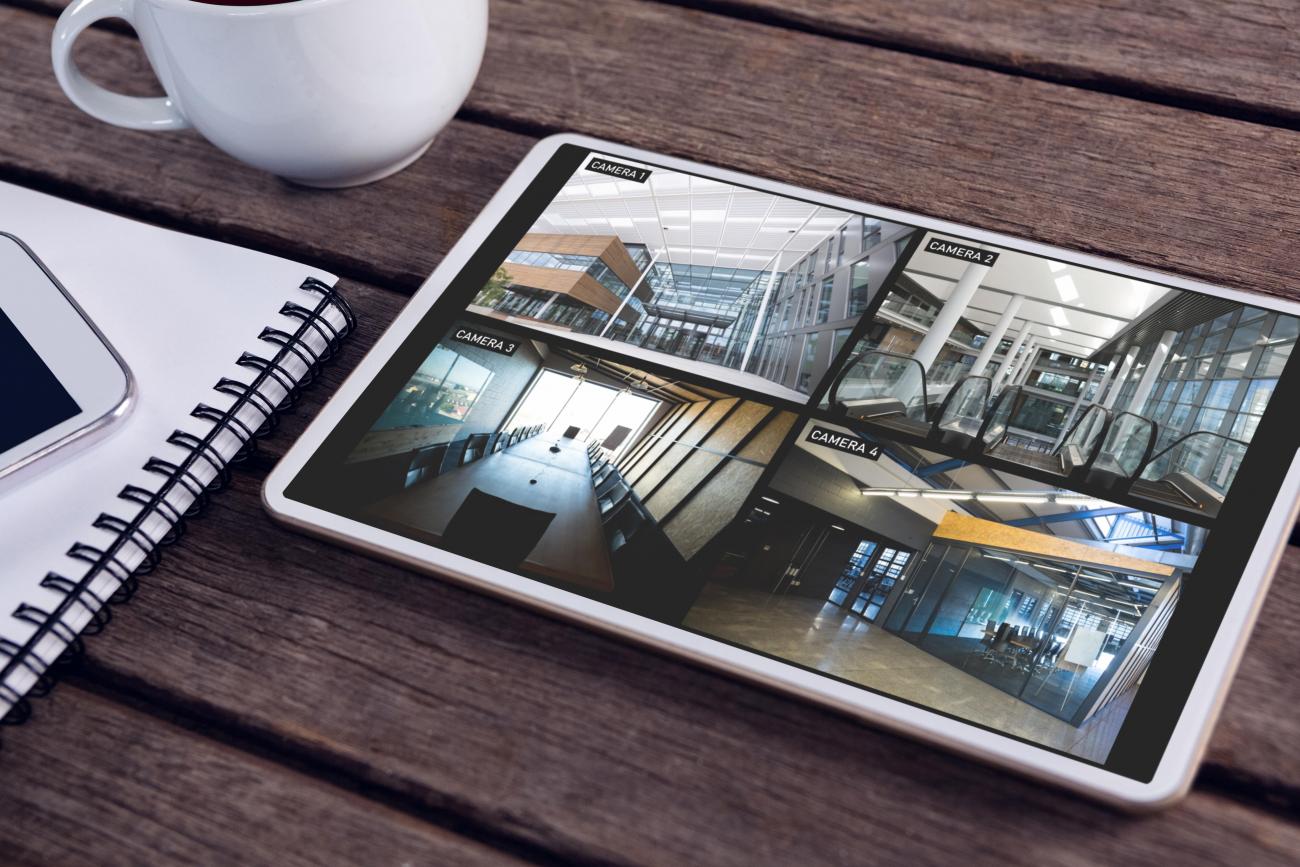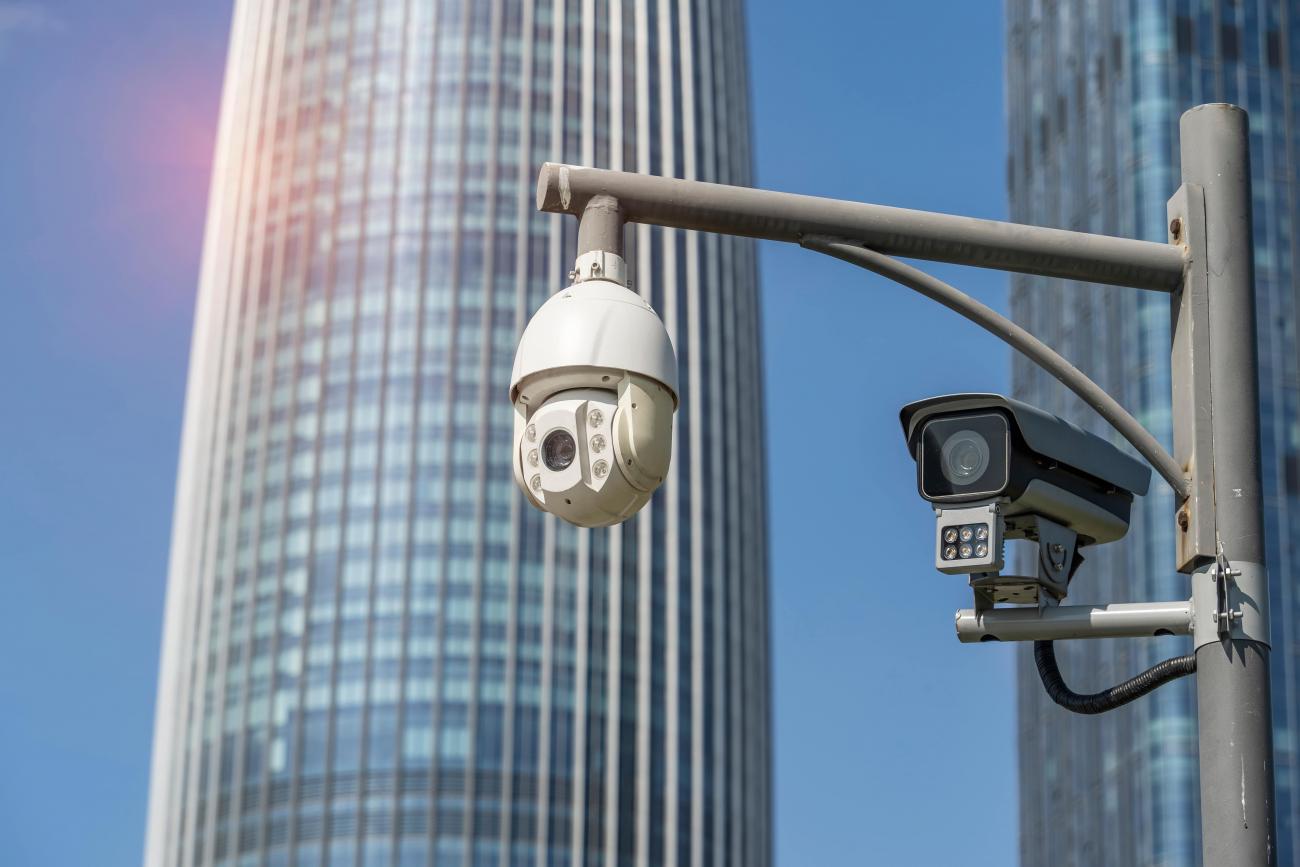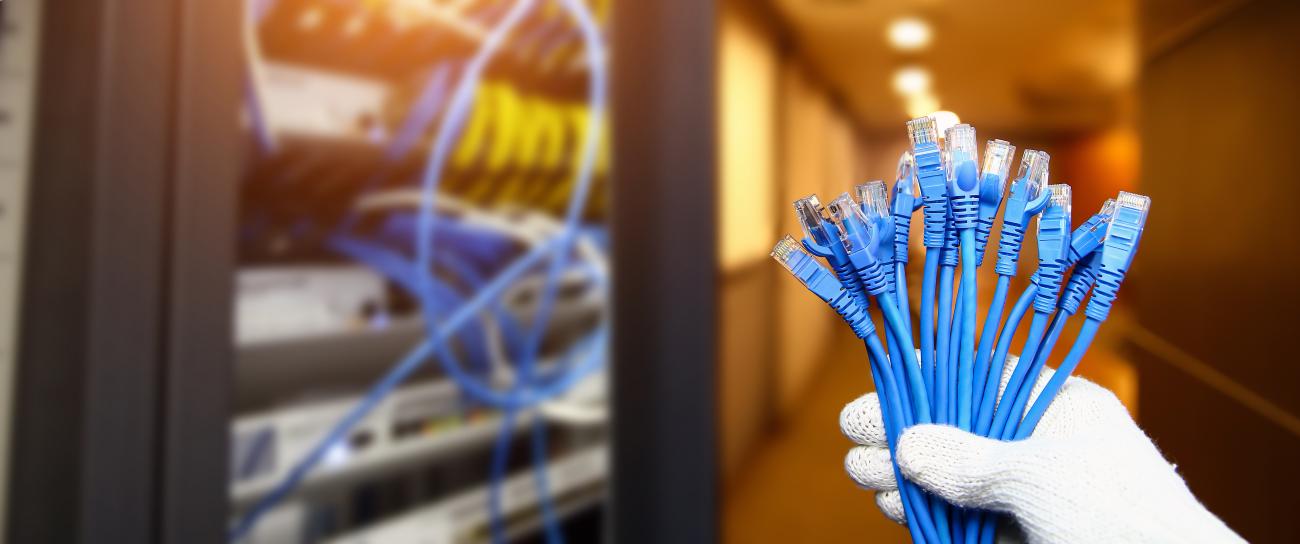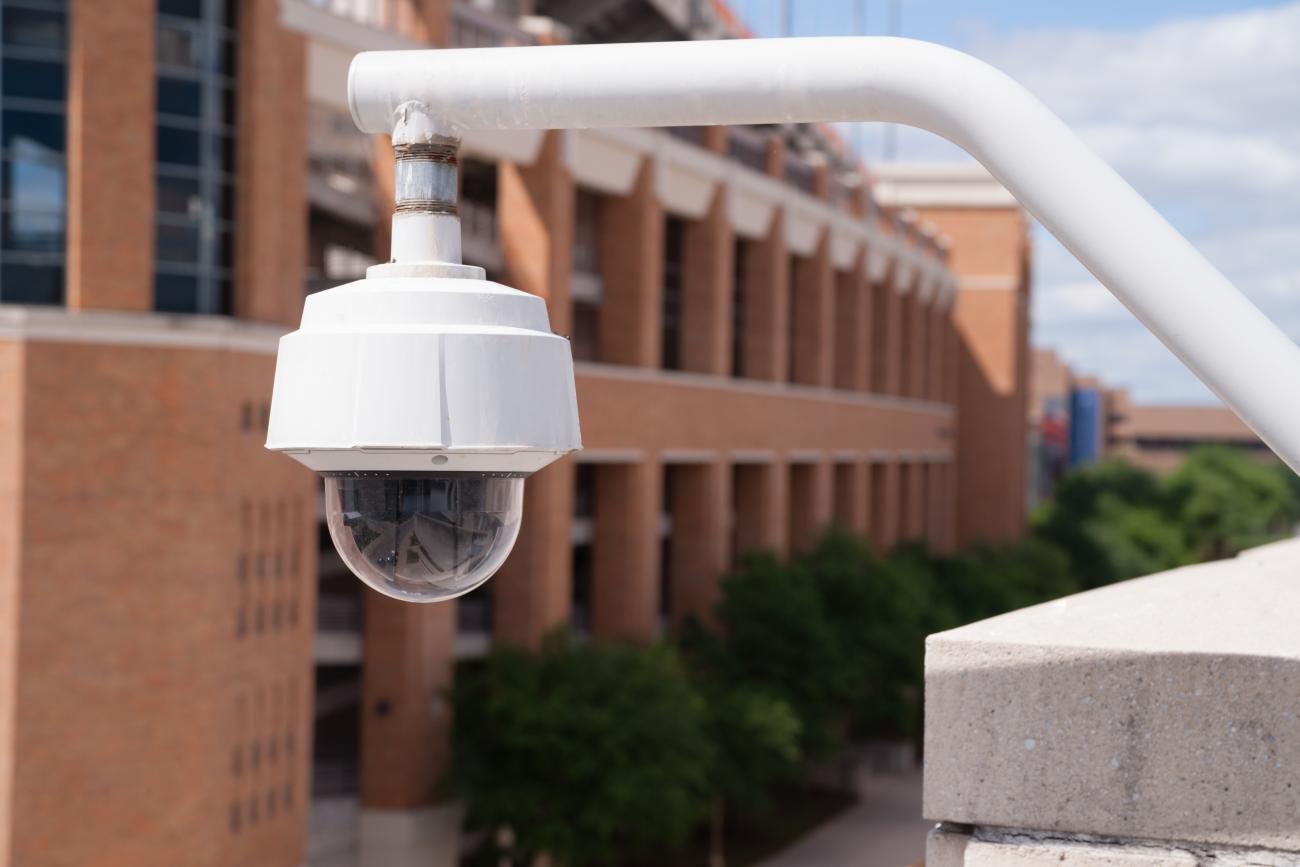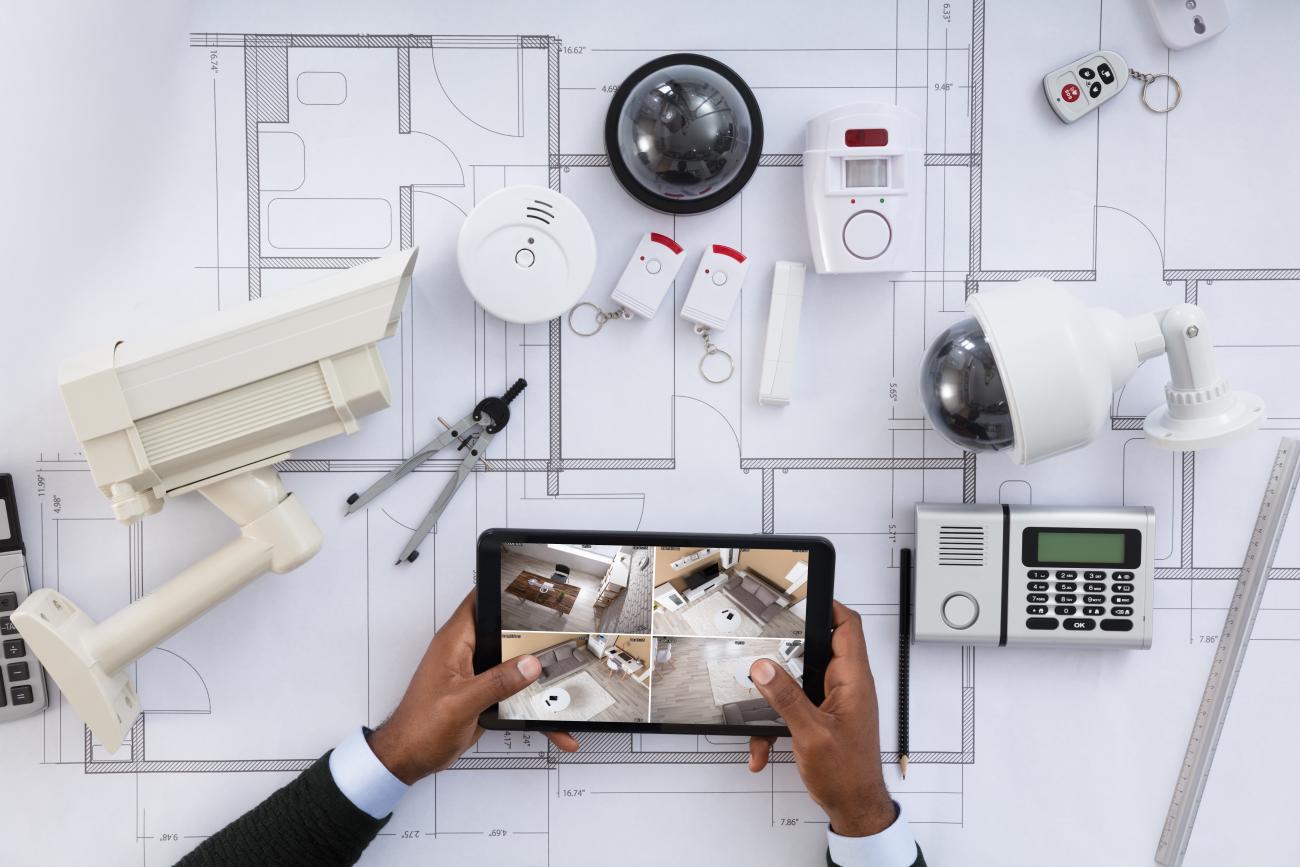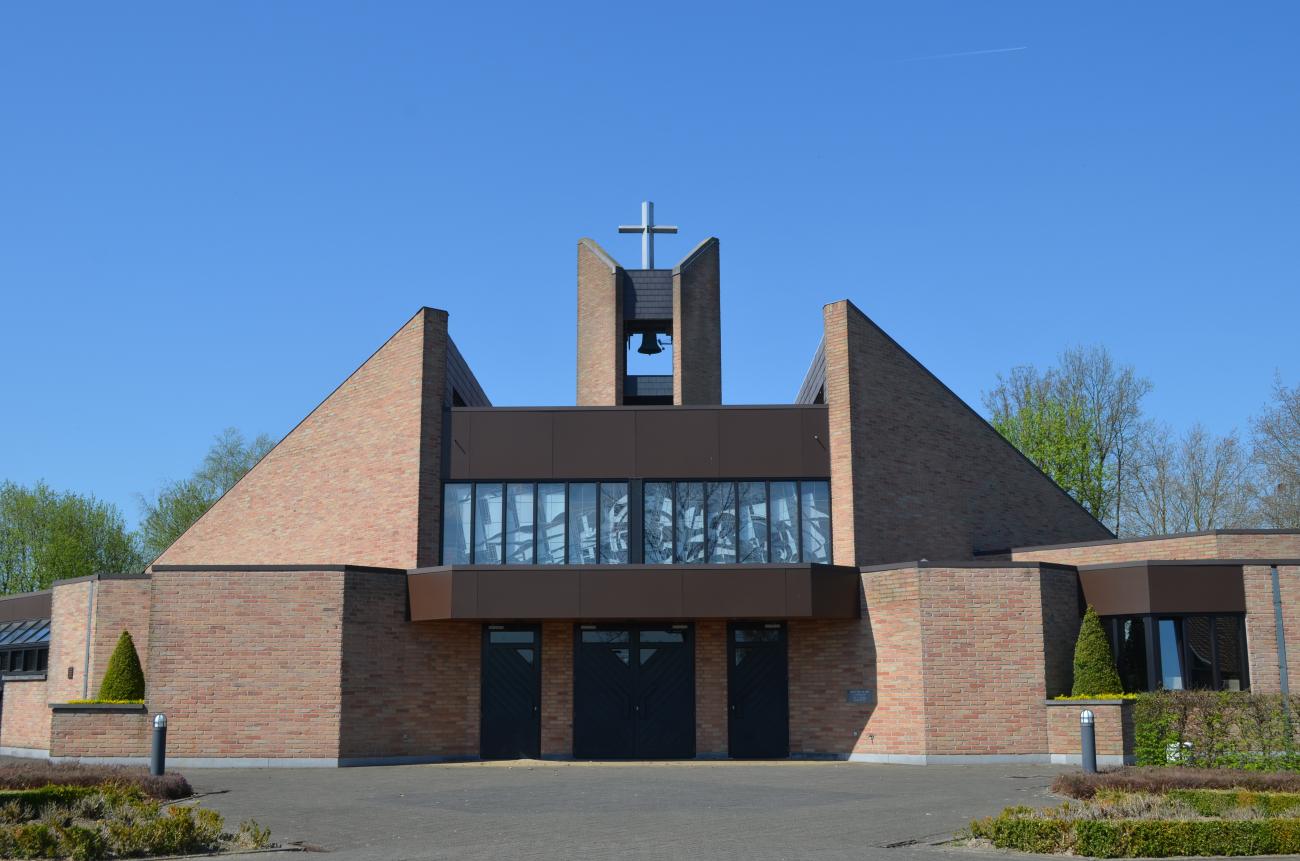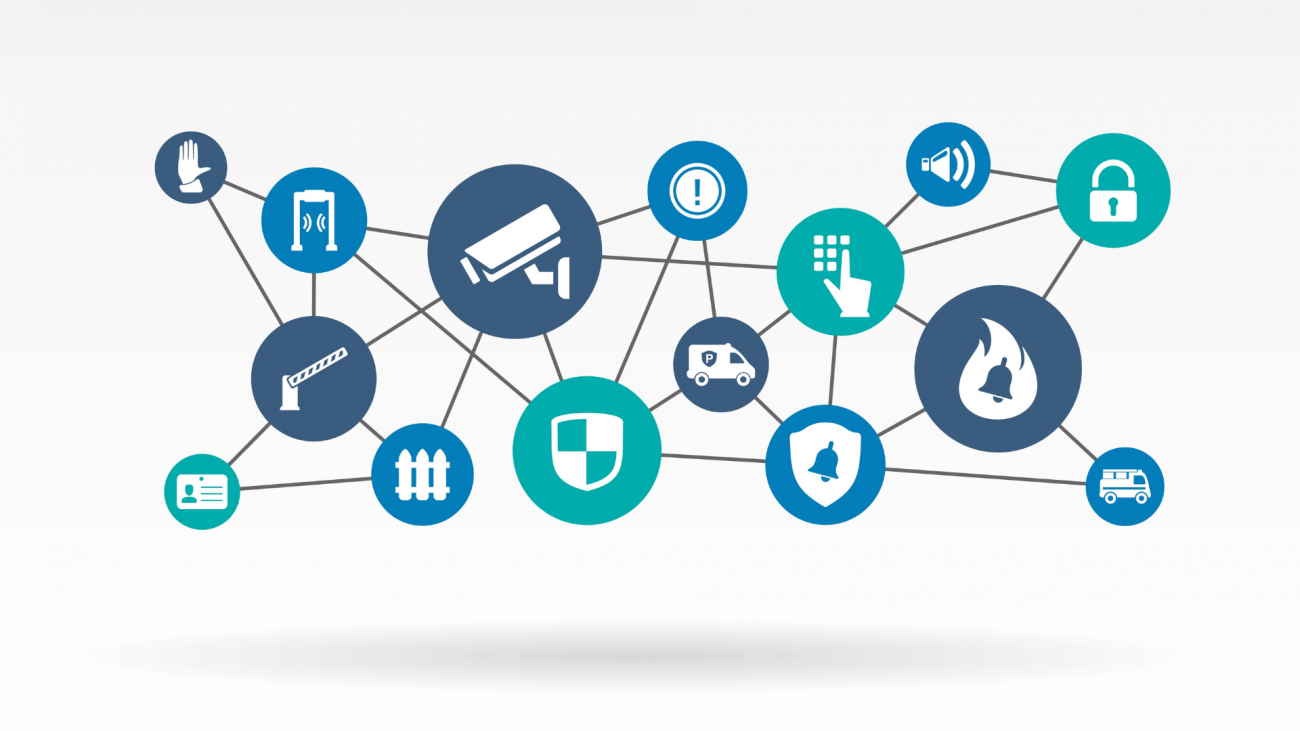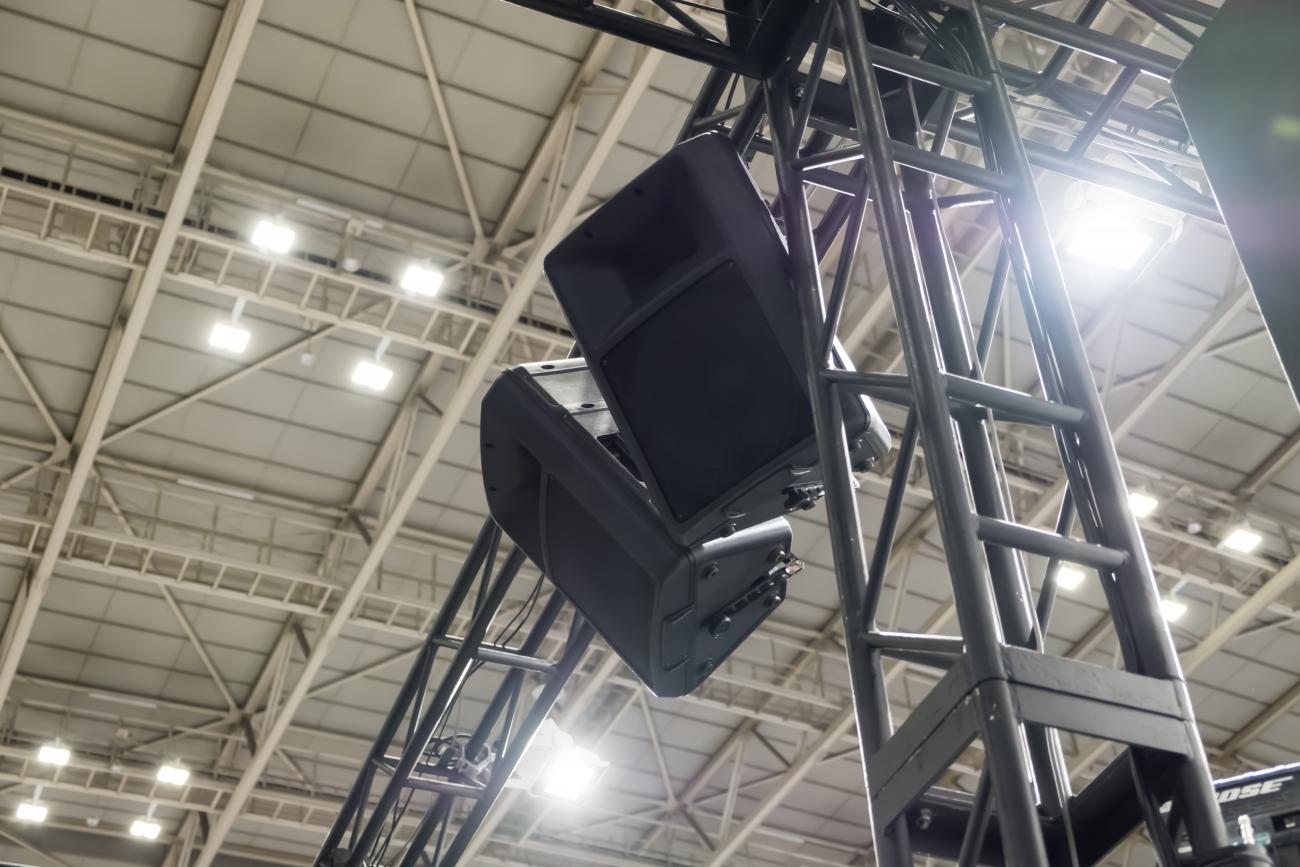To effectively safeguard your business and its assets, investing in a robust security camera system is crucial. However, the installation process can be complex, requiring careful planning and execution.
Continue readingMisconceptions of Commercial Security Camera Installation
Understand the common misconceptions of commercial security camera installation to make informed decisions about protecting your property.
Commercial security camera installation is a critical aspect of protecting your business, employees, and assets. Unfortunately, there are several misconceptions about commercial security camera installation that can lead to inadequate security and leave businesses vulnerable to theft, vandalism, and other security threats.
As Maryland business security experts, we hear many misconceptions about security. In this blog, we are going to clear up some of the top misconceptions we hear from businesses so that you can make informed decisions and protect your business.
Any security camera will do

One of the most significant misconceptions is that any security camera will do. However, not all security cameras are created equal. Some cameras may be better suited for indoor use, while others may be better suited for outdoor use. Additionally, some cameras may have better low-light capabilities, while others may be better at capturing high-resolution images.
It can be tempting to buy a cheap security camera from Amazon or some other retailer, but doing so may not provide you with the protection you need. It’s essential to choose the right camera for the specific security needs of the business.
Security cameras are easy to install
Another misconception is that security cameras are easy to install. While some cameras may be relatively straightforward to install, others require more technical expertise. Proper installation of security cameras involves several steps, including determining the best location, running cables, connecting the camera to the recording device, and configuring settings. It’s crucial to have an experienced technician install the cameras to ensure that they are installed correctly and functioning correctly.
One or two cameras are all that is needed
When businesses seek security camera installation for the first time, they sometimes believe they only need a couple of cameras. In reality, these businesses really need half a dozen cameras or more. One or two cameras are often not enough to adequately protect their business. Having multiple cameras properly installed can help cover blindspots and makes it more difficult for criminals to bypass.
A large number of cameras provide better security
More cameras may help one feel more secure, but it doesn’t mean the more cameras the better security. When installing cameras, it’s not necessarily the number of cameras that matters, but rather their placement and coverage. Placing cameras in strategic locations, such as entrances and exits, high-traffic areas, and areas of high-value items, can provide better coverage and improve security.
DIY installation is just as effective
While DIY installation may seem like an attractive option to save money, it’s essential to recognize the potential risks and drawbacks of doing so. Commercial security camera installation requires specialized knowledge and equipment, and improper installation can result in camera malfunctions, poor image quality, and other issues. Hiring a professional to install your security cameras can ensure that they are installed correctly and function effectively.
Protect your business with proper installation
Commercial security camera installation requires careful consideration of the specific security needs of the business, and technical expertise to get the job done right. Without proper installation business owners leave their businesses vulnerable.
To ensure proper installation based on their client’s needs, a professional will follow a process much like this one.
- Initial discussion of security needs
- Analyze area to assess needs
- Recommendations for cameras
- Install security cameras and additional security systems
- Test to ensure proper installation and functionality
Working with a professional security company will improve the likelihood of proper installation which will lead to improved security. We recommend that any business looking to install security cameras speaks with a professional first.
If your business is in Maryland then give us a call. We can provide a consultation and recommendations for your security based on your needs.
Commercial Digital Signage Installation
Thinking about having a digital sign, kiosk or other display installed? Get all the information you need to know about it.
Commercial digital signage has become a popular and effective way for businesses to communicate with their customers and employees. Whether it’s for advertising, wayfinding, or displaying important information, digital signage can offer a dynamic and engaging experience that traditional signage simply can’t match.
Are you considering a digital directory, conference room calendar display, or other digital signage? There are a few key things to keep in mind to ensure a successful implementation. This information will help guide you through the process and what you need to know.
As your Maryland and Mid-Atlantic Audio Visual experts, we are here to help if you have any additional questions.
Planning for digital signage installation

Determine your goals and objectives
Before you begin the installation process, it’s important to identify your goals and objectives for the signage. Are you using it for advertising purposes? Do you need it for wayfinding in a large facility? Will it be used to display important information such as schedules or menus? Understanding your goals will help you choose the right hardware and software solutions and ensure that your signage is effective in achieving your desired outcomes.
Choose the right hardware and software
Once you’ve identified your goals, it’s time to choose the right hardware and software to accompany your digital display. There are a wide variety of options available, ranging from basic display screens to interactive kiosks with touchscreens and cameras. Make sure to choose hardware and software that is compatible with your goals and objectives, and that meets your budget and technical requirements. Don’t worry if you’re unsure. The company you choose to install the display will be able to help you find and install the right hardware and software to get you the functionality you need.
Plan the content and design
What do you envision the end result to look like? The content and design of your digital signage is just as important as the hardware and software. It’s essential to create content that is engaging, relevant, and informative for your target audience. You should also consider the design elements such as colors, fonts, and layout to ensure that your signage is visually appealing and consistent with your branding.
Ensure proper installation and maintenance
Once you’ve chosen the hardware and software and created the content and design, it’s time to install the digital signage. Proper installation is essential for ensuring that the signage is functional and effective. The last thing you want to worry about is having a blank screen in the middle of your lobby. An important part of our job as a cabling company is to test everything we install. This ensures proper installation and that your sign will remain operational.
Evaluate effectiveness and make adjustments
Finally, it’s important to regularly evaluate the effectiveness of your digital signage and make adjustments as needed. This may involve reviewing analytics data, conducting surveys, or simply observing how people interact with the signage in real-world scenarios. You may also want to adjust in the event the signage is to be used for a different function. By making adjustments based on this feedback, you can ensure that your digital signage remains effective and valuable for your business.
Having a Digital Display Installed in Maryland
A successful commercial digital signage installation requires careful planning, the right hardware and software, engaging content and design, proper installation and maintenance, and ongoing evaluation and adjustments. By following these guidelines, you can ensure that your digital signage is effective, engaging, and valuable for your business.
When it comes to the installation itself it’s fairly straightforward for the business. The company installing the display will meet with you and discuss your needs. Based on your needs and the display specifications, the company will prepare all the necessary items for the job. When the time comes they will install the display, organize the cabling so it’s neat and clean, install any necessary software and test it to ensure proper functionality. With a team like Systcom’s which offers everything you need, the process is an easy one.
As you look for a company to install your digital signage, make sure to look for a company that can implement at each step of the installation process. At Systcom, we offer everything you need. From the display itself to the software and installation, we make it easy for businesses. All you have to do is let us know how we can help.
Is it time to Upgrade Your Office’s Network Cabling Infrastructure?
Gain faster network speeds, improved security and meet the demands of future business needs with improved network cabling.
As technology has advanced so has our need for faster internet and network communications. Older network infrastructures no longer meet the demands of modern business needs.
Are you frustrated with your internet speeds and ability to use modern technology? Do you wish you had more versatility in your office technology or security systems? Are you planning on investing in more technology but you’re wondering if your current infrastructure can handle it?
If so, then you likely need to update your office’s network cabling.
Upgrading your structured cabling infrastructure can allow for faster internet and upgraded communications technology. We will show you the benefits it can bring to help you decide if it’s worth your investment.
Why Upgrade Structured Cabling

With technological advances, the need to upgrade cabling is an inevitable one. As the need for faster internet speeds grew and video conferencing became the norm, many businesses realized that their current network infrastructures just did not suffice.
This has led many companies to reach out to structured cabling companies like us at Systcom to improve their network infrastructure. Using updated practices such as Power over Ethernet (PoE) is quickly becoming the norm due to the flexibility and improvement in performance.
There are many benefits that it can bring.
- Better Bandwith and Faster Speeds
- Improved data latency for improved internet usage and download speeds (great for upgrading to systems like VoIP phones)
- Handles modern communications needs
- Universal applications for flexibility
- More Reliable
- Better Security
- More Future Proof
Technology is advancing faster and faster, but with Cat 6 cabling you can worry less about what the future holds. Upgrading your cabling with Cat 6 cabling is not just for now, it can help support your future needs as well.
Who should consider upgrading their network infrastructure?
Many businesses have already chosen to update their network infrastructure and many more are looking to make the investment as well. For those who are considering it, but want to make sure it’s right for their business, we wanted to discuss some of the common reasons companies end up making the investment.
- Need to improve internet speeds (and the issue is not with their modem)
- Making the move to IP (internet protocol) cameras or integrated security systems
- Upgrading to VoIP phone systems
- Want to create a scalable network for changing technological needs
- Need to improve video conferencing communications
Companies can choose to make these updates regardless of their current position. We have clients who want to retrofit their current office and we also have those who are relocating or building from the ground up and want to prepare the new location before their staff moves in.
Ready to Upgrade Your Network Infrastructure?
Whether you’re looking for better video conferencing, faster internet speeds, or enhanced security, upgrading your network infrastructure can help. There is only so much that can be done on older technology and investing in upgrades provide your company with
If you’re ready to upgrade your cabling in Maryland, then give us a call. We can walk you through the process, and help you understand the benefits.
Guide to Campus Security Systems
Providing adequate security for your school or work campus is vital for everyone’s safety.
College and school campuses are home to thousands of students, faculty and staff. To ensure these busy learning environments are safe and secure for everyone, it is essential for colleges to invest in advanced security systems. The same goes for corporate businesses and technology firms that have their own large campus grounds.
In this blog, we will explore the various campus security methods utilized on business, school and college campuses today, from modern surveillance technologies to traditional access control measures. Even if your college or business campus already has a security system in place, there’s always more that can be done to improve safety.
So, join us as we discuss the importance of security systems on campuses and how they can help protect students, customers, faculty and staff.
Best Practices for Campus Security

Before you even start considering different options, it’s helpful to be aware of some of the accepted best practices for implementing campus security systems. Below are the most important guidelines to be aware of:
- Plan strategically: When it comes to campus security, it’s important to have a well-thought-out plan in place. This may involve conducting a risk assessment to identify potential vulnerabilities, setting up emergency protocols and procedures, and identifying resources (such as security personnel, technology, and training) that will be needed to effectively implement the plan.
- Train all staff and volunteers: Ensuring that all staff and volunteers on campus are trained in emergency procedures, as well as how to identify and report potential security threats, is an important aspect of maintaining a safe and secure environment. This may involve providing regular training sessions and drills to ensure that everyone is prepared in the event of an emergency.
- Understand the technology available: There are many different types of technology available for campus security, including surveillance cameras, access control systems, and emergency notification systems. It’s important for campus security staff to understand how these systems work and how to use them effectively.
- Implement integrated security solutions: An integrated security solution is one that combines multiple security technologies and protocols in order to provide a more comprehensive approach to campus security. This may involve integrating surveillance cameras with access control systems, or using emergency notification systems to alert students and staff of potential threats.
It’s better to overestimate security needs than underestimate them: It’s always better to be prepared and have more resources in place than you think you might need, rather than find yourself under-equipped in the event of an emergency. Overestimating security needs can help ensure that you have the resources and protocols in place to effectively respond to any potential threats on campus.
Understand the Security Technology that is Available
Here are some of the most popular and practical campus security system technologies, with a brief description of how they work and how they can benefit your school, college or business:
- Access control: Access control systems are used to control and monitor access to buildings or areas on campus. These systems may use a variety of methods to grant or deny access, such as keycards, biometric scanners, or security codes.
- Surveillance: Surveillance systems are used to monitor activity on campus and can include a variety of technologies, such as surveillance cameras and motion detectors. These systems can be used to detect and deter crime, as well as assist in investigations.
- Alarm systems: Alarm systems can be used to alert campus security or local authorities in the event of an emergency. These systems may include alarms that are activated by motion or other types of sensors, or may be manually triggered by staff or students.
- Smart technology: Smart technology refers to technology that is connected to the Internet and can be controlled or accessed remotely. This may include smart security systems that can be monitored and controlled using a smartphone or other device, or smart locks that can be activated remotely. Smart technology can provide an extra layer of security and convenience on campus.
Creating A Security Program for your Campus
Finally, here are our suggested steps to follow when creating a campus security system:
- Establish a purpose and plan for the security system: Before creating a security program for your campus, it’s important to have a clear purpose and plan in place. This may involve identifying the specific goals and objectives of the security program, such as reducing crime or increasing the overall sense of safety on campus.
- Assess vulnerabilities: Conducting a risk assessment is an important step in creating a security program for your campus. This involves identifying potential vulnerabilities, such as weak points in the physical security of buildings or areas of the campus that are prone to crime.
- Design security systems: Once vulnerabilities have been identified, the next step is to design security systems that will address these vulnerabilities. This may involve selecting specific types of security technology, such as surveillance cameras or access control systems, and determining how they will be implemented on campus.
- Implementation: Implementing a security program on campus involves several steps, including:
- Physical installation: This may involve installing security technology, such as surveillance cameras or access control systems, on campus.
- Internal safety policy implementation: This may involve establishing internal policies and procedures for staff and students to follow in the event of an emergency, as well as setting up protocols for reporting suspicious activity or potential threats.
- Training: Providing regular training sessions and drills for staff and students is an important aspect of implementing a security program on campus. This can help ensure that everyone knows how to use the security technology and is prepared in the event of an emergency.
In conclusion, implementing a comprehensive security program on a campus is essential to maintaining a safe and secure environment for staff and students. Some best practices for campus security include planning strategically, training all staff and volunteers, understanding the technology available, and implementing integrated security solutions. When creating a security program for your campus, it’s important to establish a purpose and plan, assess vulnerabilities, design security systems, and implement them effectively.
For help with creating a security program for your campus, consider working with a company like us at Systcom, which has expertise in designing and implementing effective security systems, tailored to your specific needs and requirements.
Don’t hesitate to reach out if you’d like assistance or more information on any of the points or technologies discussed.
Tips for Protecting your Business with Security Systems
All businesses, no matter the size, should make security a priority.
Small business owners have a lot on their plates. Between managing employees, ensuring customer satisfaction, and keeping track of the bottom line, it can be difficult to find time to focus on anything else. But one aspect of running a business that should not be neglected is security.
A break-in can be a devastating event for any business. Not only can it result in the loss of valuable inventory, but it can also damage equipment and disrupt operations. Additionally, a business should always think of the safety of employees and customers.
A security system can help to deter would-be burglars, protect your business against unwanted intruders, and provide peace of mind for you and your employees, knowing that your business is safe and secure. In this post, we’ll share some actionable tips for protecting your business with security systems, smart technology, and more.
Security starts with education

It’s no secret that businesses face many security threats. From theft and vandalism to cybercrime and data breaches, there are a multitude of ways that criminals can target a business. However, there are also a number of steps that businesses can take to protect themselves.
One of the most important is ensuring that staff members are properly educated about loss prevention methods. By understanding common techniques used by criminals and knowing how to respond, employees can play a key role in keeping a business safe. Additionally, regular training can help to ensure that staff members are up to date on the latest security measures. By taking these steps, businesses can create a safe environment for their employees and customers alike.
Invest in the right number of security cameras (hint: it’s more than you think)
Too often, business owners assume one camera out front is enough. Unfortunately, this is rarely the case. There is no one-size-fits-all answer to the question of how many security cameras your business needs. The optimal number of cameras will vary depending on the size and layout of the premises, the type of business, and the specific security risks that need to be addressed.
However, there are some general guidelines that can help businesses to determine the right number of cameras for their needs. First, it is important to identify all potential blind spots on the premises and make sure that these areas are covered by camera footage.
Second, businesses should consider installing cameras at all entrances and exits, as well as in any areas where valuable assets are kept. Finally, it is advisable to have at least one camera for every 1,000 square feet of space.
The best course of action if you’re unsure is to hire a qualified and experienced security professional to help identify the optimal number of cameras and the right type of cameras, especially if you keep high-value or difficult-to-replace equipment on site.
Understand the different security systems available
When it comes to security, there are a lot of different options to choose from. To start with, there’s surveillance cameras. These are great for keeping an eye on things, but they’re not the only option. Surveillance cameras might deter crime, but they can’t actually stop it from happening.
Here’s a quick overview of some of the most popular security systems available:
- Access control systems are a great way to keep track of who is coming and going from your business. Benefits include the ability to set permissions for different users, as well as being able to see a log of all activity.
- Intrusion detection systems are designed to detect and prevent unauthorized access to your premises. Benefits include real-time alerts, as well as the ability to remotely monitor activity.
- Safety alarms are a great way to keep your employees safe in the event of an emergency. Benefits include the ability to instantly notify emergency services, as well as the peace of mind that comes with knowing your employees are protected.
- Wi-Fi security is essential for any business that relies on wireless network access. Benefits include increased protection from hackers and other unauthorized users, as well as the ability to remotely manage and monitor your network.
By understanding the different security systems available, you can make an informed decision about which one is right for your business. With the right system in place, you can rest assured that your business is safe and secure.
Smart technology is readily available for any size business
As the world becomes increasingly digitized, more and more businesses (and not just high-tech ones) are turning to smart technology to help them run their operations. From small businesses to large corporations, smart tech offers a number of benefits that can make a big difference in terms of efficiency and security.
One of the most appealing aspects of smart tech is that it is readily available for any size business. There are a variety of affordable options on the market, making it easy to find a solution that fits your budget and needs. In addition, smart tech is constantly evolving, so even if you don’t have the latest and greatest equipment, you can still stay up to date with the latest features and capabilities.
Whether you’re looking for a way to streamline your operations or simply want to give your business an extra edge, smart technology is definitely worth considering.
Professional setup can help improve security
When it comes to security, businesses can’t afford to take chances. A professional security setup can provide peace of mind, knowing that all potential weak points have been identified and fortified.
DIY security solutions may seem like a cost-effective option, but they often create blind spots that leave businesses vulnerable. Without the help of a professional, it can be difficult to identify all of the potential risks to a business’s security.
As a result, companies that DIY their security setup often end up with weak points that could be exploited by criminals. By contrast, a professional security setup is tailored to the specific needs of a business, providing comprehensive protection against all current and future threats.
Be intentional about protecting your business
In today’s uncertain world, businesses need all the protection they can get. The key is to be proactive and intentional about protecting your business so that you can avoid any potential disasters. Investing in a professional security setup is the best way to safeguard a company’s assets and ensure peace of mind for all involved.
Solving the Top Business Wireless Network Issues
Wireless network issues can cost business time and money. We help solve those problems.
Businesses of all shapes and sizes depend on their wireless networks to run efficiently every day. When Wi-Fi has problems, it can mean lost efficiency, productivity and ultimately revenue. According to a Gartner study, network downtime can cost companies thousands per minute. Those who rely on connected security equipment could also face security risks in the event of downtime.
As a systems integrator, we experience a number of organizations that run into wireless network or technology problems. For a company that depends on wireless internet to run, it can be both frustrating and costly to have issues with the wireless systems. This is why we want to provide the information necessary to help solve these problems.
Below will discuss some of the top issues we run into and solutions for them. If you are in the Mid-Atlantic area and need help fixing your wireless problems then contact our team and we can help.
Top issues and potential causes

When dealing with technology, there are a number of things that can go wrong. Equipment, human error, even building materials, can affect the effectiveness of wireless technology. Though every business and situation is different, we have found that many businesses have the following issues.
Slow network speeds
One of the biggest frustrations with business Wi-Fi is slow speeds. When speeds are slow it makes video conferencing challenging, computer applications can freeze and overall employee productivity can plummet.
Many businesses just live with the problem because they don’t realize it’s not just their internet provider, but that there may be solvable issues within their network.
One of the most common problems is the network’s bandwidth. When usage demands outweigh your network’s bandwidth it causes congestion. This congestion is going to cause slowed internet speeds. If your organization is dealing with slow speeds, then check the bandwidth first.
A bandwidth problem can be solved by limiting the number of users on a network and/or by limiting how much bandwidth each user is utilizing.
There are many things an organization can do to improve its bandwidth usage including hardwiring certain devices or upgrading equipment.

Dead or weak internet spots
Dead zones are another wireless network problem that businesses tend to just deal with. This can be a challenge to understand especially when you have really great internet everywhere else.
For some, it can be a matter of the Wi-Fi simply not extending far enough. There are limitations to how far a router can reach and as you get further away from that area the weaker internet connections get.
What most organizations experience is interference or blockages. Certain technologies or materials can block signals causing dead spots on your campus. For example, a lab may have a large piece of equipment that interferes with the Wi-Fi causing a dead zone around it. Another common example we see is with older concrete buildings. Thick concrete can make it hard for wireless signals to reach as far as they normally would.
If you are experiencing dead zones you can try moving your router or using a Wi-Fi extender. However, often times third-party assistance is needed to help identify the issues and solutions for dead zones.
Devices not connecting to the wireless network
Occasionally, businesses will discover that some devices will not connect to the wireless network even though other devices are connected. This befuddles a lot of people because why would one device work but not another?
This problem can be caused for a number of reasons including some of what was already discussed in previous sections. Dead zones, congested networks, etc. can all play a part in devices failing to connect. Additionally, you may find that there are issues with the devices themselves and not the internet itself.
When it comes to wireless network issues there are a number of potential causes. Often, it’s best to test one solution at a time to see if you can identify what is causing the problem. There are things businesses can do internally, but professionals are available to help figure out these wireless issues.
Solutions for network issues
If your organization is dependent upon efficient Wi-Fi to be productive then you will need to solve these wireless issues as soon as possible. Depending on the cause of the issues there are things you can do in-house and there are services provided by outside vendors that can help.
Solutions you can do
Businesses are often limited in what they can do to fix their wifi issues, but there are some things that can be tried right away.
- Reset the Router
- Test different devices to identify if it is a device issue or network issue
- Call your ISP (internet service provider)
Businesses of course can always purchase a Wi-Fi extender or upgrade their equipment if they believe that to be the problem. However, if unsure whether this will fix the problem, you may find yourself wasting time, money and productivity.
Unless certain of the issues, your best choice may be to hire a wireless systems expert.
What a Systems Integrator can do
Without the technical experience, and equipment, there is only so much a business can do internally to fix their network issues. Many depend on their internal IT staff but often times it is outside of their level of expertise. So, instead of losing precious productivity, call a network installation company to identify the issues and provide solutions. Here is what they can do to help you solve the problems.
- Survey the building or campus to find wireless signal strengths
- They pick up every radio frequency (RF) signal to show good and interfering signals
- Review the network system design and coverage areas
- Provide a printed copy of the survey and the heat map of the floor
- Create recommendations and solutions
- Design (or redesign) network systems
A network installation specialist is going to be able to identify issues and show you evidence of bad coverage areas. With this information they will provide recommendations such as placing access points, moving certain machines, distributing antennas, etc.
They will solve your current network issues and provide recommendations to prevent future ones.
Hiring a wireless Systems Integrator to solve wireless issues
Most organizations lack the ability to fix wireless network issues internally but that does not stop them from trying. As productivity decreases the costs of wireless network issues rise. Waiting too long to hire a professional can cost you more than you expect. If you do decide to hire a professional, here is what they will offer:
- Expertise to identify issues and solutions
- Quicker turnaround for bad network problems
- Suggestions and recommendations
- The ability to fix issues that you don’t have the equipment to fix
A wireless Systems Integrator can offer so much more than providing a stronger wifi signal. With their expertise in various cabling practices, they are able to improve high-speed data and voice communication networks. They can also properly design the wireless network so that your systems run at their most effective.
So, if you want to optimize sound systems, security, video conferencing or anything else that has to do with data transfer through cables, then they are the best solution for the job.
At Systcom, we help organizations get the most out of their telecommunications and network systems by designing, installing, troubleshooting and fixing their technological systems. If your wireless networks are causing you problems, then give us a call.
Protecting your Church with a Security System
When properly implemented, a church security systems help protect a church’s property, congregation and guests.
A security system for a church is an important element in keeping its congregation, guests and property safe. Like many organizations and institutions many churches hope (and sometimes wrongly assume) that nothing bad will ever happen on their church’s property. Unfortunately, we live in an imperfect world in which burglaries or other emergencies happen to those who don’t deserve them.
This is why having an adequate security system is important for any church.
The thought of security can be overwhelming and can make you feel a bit out of your element but it’s an important discussion to have.
We want to help make it feel less overwhelming by discussing the things your need to know in this article.
Exploring Security Systems for Churches

Protecting your house of worship takes more than simply putting up a couple of security cameras. There are various components to security that will allow your church to protect itself.
Surveillance cameras
Security cameras are not only great for monitoring important areas of your church property but they also work as a deterent. Surveillance cameras should be placed in strategic places to ensure visibility while limiting blindspots.
It’s also important to think about the type of cameras you need and how your church intends on viewing the video. Every camera functions differently, has varying levels of video quality and accessibility.
Alarms
Whether it is burglar alarms or a fire alarm, a system to alert your church when something goes wrong is an important aspect in protecting the church.
Access control
The traditional use for access control is to keep people out of important places where they don’t belong. This helps churches to reduce the risk of important equipment being broken or things of value being stolen.
However, there are other uses for access control. For example, your church may be open to various groups with people coming in and out. Traditional keys are easily stolen or lost but with modern access control you can choose who can has access and monitor who enters and leaves.
Smart technology
Like the rest of our life, smart technology has become an integral part of securing a church. Smart technology allows easy access to surveillance footage, alarm notifications, and access control permissions for those who should have access.
With most churches lacking security personnel, having smart technology provides them with the accessibility they need to make protecting the church more realistic.
Two-way radios
While not part of the security system per se, it is an important part of protecting the church and its members. Two-way radios are essential for larger churches but can also provide great safety benefits for smaller churches.
Whether you want to monitor the halls as people come and go, or protect the children during the children’s programs, two-way radios provide ease of communication to provide the safety needed.
Security Plan
One thing that ties all the security systems together is a security plan. It is an important part of evaluating what security measures are important and what systems are best to fit your needs.
All of these components play an important role in protecting a church. As you may have noticed, some of the components can not be outsourced.
A security company will help design and install the equipment, but your church will play a role in ensuring that things stay safe.
Risk Assessments and Planning

Every house of worship is different which means the security solutions they need will vary. Some churches may only want a few cameras to monitor parking lots and entrance ways while others need different levels of security like access control. The best way for your church to ensure they have the right security solutions in place is by doing a risk assessment.
Don’t worry, you don’t have to be a security expert to perform a basic risk assessment (though it would benefit you greatly if you walked through with a security expert). Here is how you can perform a basic risk assessment to help you plan what security systems you will need.
First, identify what areas you need to protect the most. Then walk through the property and identify vulnerabilities. You may also want to take note of any special challenges you have. Once your assessment is complete, you will have a starting point for planning your security solutions.
This process, though it seems unnecessary to some, helps your church to identify potential risks you were not aware of and plan the best approach for your security needs.
Costs of a church security system
A security system for a church will vary vastly from church to church. For example, a simple DIY surveillance system for a small church will cost under $1000, while a large church that needs multiple cameras, access control and other systems will pay over $10,000.
There are a number of factors that will influence the costs of a security system
- How much equipment is needed
- The type of equipment purchased
- Whether you need to pay for a professional installer
- Paying for additional monthly monitoring
Some churches qualify for grant programs that help them cover the cost of their security improvements.
Regardless of your church’s needs, it’s important to consider a future-proof security design. This way, if you need to change or upgrade your systems later, it is not an extremely labor-intensive project.
The best way to know what your specific costs will be is to get a quote from a local security company. They will be able to help you assess your needs, design your security system and provide an estimate of costs.
Professional Installer vs DIY Security
Most churches have a limited budget when it comes to security. Because of this, many churches look for cheaper alternatives and look to have a trustee, elder or a church volunteer install the equipment.
This is a much cheaper alternative but it is not always the best security option for churches.
Pros and Cons of professional security installers vs doing it yourself.
DIY
Modern technology has made it easy to purchase and install security equipment. Nearly anyone can go online and order various security equipment for their church online. Is it the right choice for your church?
Pros:
- Cheap equipment is available online
- No installation fee
- Smart technology is available
Cons:
- Need to find someone who can install
- Risk of improper installation
- Cameras may have blindspots
- Security system may not function or allow easy integration
Hiring a Professional Installer
Many churches rely on the help of expert security professionals to design and install their security systems. It makes securing a place of worship a much simpler process. Is outsourcing your security the right choice?
Pros:
- Ensures security system is properly installed
- Better design limits blindspots and provides improved security
- Availability of experts to ask questions
- Access to equipment you may otherwise not have access to
Cons:
- More expensive
- May need to wait for availability in scheduling
Choosing a professional security installer
If you believe hiring a professional installer is the best option for your church, then it’s important to know how to pick the right one. There are a number of security installers near you each having their own specialties. Going back to your security plan and risk assessment will help you identify who best fits your needs.
Once you find some who fit your needs, make sure they have the following qualifications:
- Licensed (not all states require licensing, though it helps identify qualified companies)
- Expertise
- Services they offer
- Costs
- Professionalism
Expertise and knowledge are basic requirements for hiring a security professional. But, it is also important that they are professional and courteous. Your security needs may change over time and it’s important to have a security partner that you can go to when you have questions.
If you are looking for a security installer in the Mid-Atlantic then contact the experts at Systcom. Systcom technicians not only can design and install your security systems but will also ensure your cables are cleaned up for a clean presentation.
Protecting Your Business With Integrated Business Security
Technology has advanced over the years allowing businesses to provide better and more manageable security. One major way to enhance security is by installing an integrated security system.
No matter the size or industry, businesses want to provide protection for their business. There are many commercial security solutions available but what’s best for business? As technology advances and as the tactics of criminals have, it’s important to have an integrated business security system to properly protect your business.
An integrated security system integrates all the various components into a centralized manageable system. This provides ease of management as well as improved security.
We want businesses to understand the solutions available to them as well as the capabilities of modern business security systems. Once you have the knowledge, it’s up to you to decide what is best for your business.
Benefits of an integrated business security system

Most businesses don’t really know what’s available in terms of security until they sit down and speak with a security expert. Oftentimes, when business owners seek to protect their business their plan is to have a couple of cameras installed.
It’s important to understand that simply installing a couple of surveillance cameras leaves vulnerabilities and holes in an organization’s security. While this may suffice for some, others would benefit from having an integrated security system. Here is what it would provide them.
Better Security Management and Accessibility
Traditional security systems are controlled and monitored from a stationary point. This means in order to see a security camera you would have to go to wherever it’s being fed/streamed. The same applies for alarms, access control points and any other security measure.
With a modern integrated security system, cameras and other components of a security system can be accessed from a smartphone wherever an individual is. This allows for better management of security when you can assess systems anytime wherever you are.
Improved Risk prevention
An integrated security system provides a business with the means to handle issues as they happen. If there’s a fire, the location can be identified immediately. Was there a snatch and grab attempt? Doors can be locked with the tap of a button on a smartphone. Need to sound the alarm? Any employee with access can now alert the organization of a security issue immediately without having to run to a fire alarm or security desk.
No matter if it’s a safety or a security risk, an integrated security system provides the efficiency to act swiftly and ultimately improving risk prevention.
Ease of use
Modern security has become an extension of the business rather than a clunky add-on. As individuals, we appreciate and expect ease of use when it comes to our technological systems. Often times this comes in the form of easy-to-use systems integrated through our smartphones where we can access it whenever and wherever we want.
With the help of modern technology businesses now have the ability to easily manage business security with the use of smartphones and integrated computer systems.
Reduced human dependence
Having security personnel and training your staff about security and safety risks is an important part of protecting a business. However, depending solely on human effort can leave a business vulnerable and can be costly.
With a system that is more easily manageable and less dependent on human resources, it can help businesses reduce the risks of human error and potentially save money in the long run.
Components of an integrated security system
A business security system is more than surveillance cameras. It should be a way to avoid risks before something happens, manage the risk during the event but also provide evidence that potentially brings resolution to the issue afterwards. That is hard to do with just security cameras or when the various components of a security system are not integrated.
It’s important to think about all of the components of a business’s security and how they work together to maximize the protection they offer.
Surveillance
A core element to any security system, surveillance provides both a preliminary defense and a risk prevention/recovery element. It can be used to catch events before it happens and to help provide evidence after something has happened.
Access control
Like an enhanced door lock, access control units can stop unwanted visitors in their tracks. Access control can prevent outsiders from entering unwanted areas and can even keep employees out of areas they don’t belong. Most importantly, it provides a record of who entered and when.
Intrusion Detection and Alarm Systems
An important part of any security system is the alarm system. Alarms serve the functions of both alerting the business that there is an issue but also deterring criminals.
Integrating the components together
Every component of a security system serves a purpose. But their ability to protect a business is maximized when integrated together. For instance, a small business owner while at home can be alerted that someone or something has tripped the alarm and then look at the surveillance systems right from their phone.
Another example is in the event that an access control key fob is stolen. Security can immediately remove access for that particular employee, to prevent intruders from obtaining access. When someone eventually does attempt to access the doors with the key fob, the system will be notified of a failed attempt and the business can use its surveillance systems to identify who the attempt was made by.
Each component has been a successful tool in protecting businesses for years. Now, businesses have the modern technology to integrate them together for even better protection.
Is it time to replace or update your antiquated security system?
Many businesses operate with old surveillance systems from years back. For some, it gets the job done while others just deal with the antiquated technology. At some point, however, your business must ask whether or not your security systems are adequate for your protection needs.
One of the main reasons one may look to replace their systems is because of key technological advances. A security system from 10 years ago may physically function well, but the surveillance cameras are low-resolution, or the system is clunky and doesn’t integrate with the other components.
Technology improvements over the years have allowed for remote access and improved viewing capabilities for surveillance cameras.
If you’ve been thinking about upgrading or modernizing your business’s security systems, you are not alone.
Here are some reasons people consider upgrading their systems
- For improved resolution on surveillance equipment
- Better functionality and enhanced features such as the zoom feature on cameras.
- Remote access abilities and smartphone integrations
If you’re looking to upgrade your systems because you’ve had issues in the past or your business needs improved functionality then it may be time to upgrade.
Chances are if it has been several years you likely should consider upgrading your commercial security system. It doesn’t mean you necessarily need to change, but it’s worth exploring options to see if you can’t improve your businesses security.
Considerations for a Commercial Sound System Installation
From mass notification systems to adding background music, every business can benefit from a professionally installed sound system.
Installation of a commercial sound system can improve the customer experience of visitors and adds functional enhancements to a business. Businesses of all types, shapes and sizes can benefit from a commercial sound system. Restaurants, grocery stores, coffee shops, factories, offices, retail establishments, and nearly any type of business can benefit from some type of sound system installed.
Realistically, any place with a campus or that wants to play sound for their visitors. But, there’s more to it than installing a speaker in your establishment.
Commercial Sound System Solutions

Every business will have its own need for a sound system. From improving the customer experience to providing necessary communications throughout campus, there are many ways businesses can utilize commercial sound systems.
Music to improve the atmosphere
From retail shops to cafes, background music provides a wonderful atmosphere boost. Subtle tunes can help to provide a welcoming environment and can make things more pleasant for those who are browsing, relaxing or waiting in line.
Sound masking for peace and quiet
For establishments that need areas of peace and quiet or who want to allow their visitors to have confidential conversations, they should consider sound masking. Sound masking is specifically tuned background noise set to a specific frequency that reduces the noticeability of human speech. In other words, it helps conversations fade into unintelligible background noise. This makes it harder for other parties to eavesdrop and also limits the distractions of hearing many conversations.
Public notification systems for mass communications
Some businesses require a PA system that can cut through the noise of talking, scuffling and machinery. Whether its for emergency communications or announcements throughout a campus, for many it’s important to have a solution that reaches everyone.
Conferencing equipment for meeting productivity
Sound systems are even important when it comes to modern business needs of an office or boardroom. With video conferencing becoming more and more important, it’s necessary to ensure there is crisp sound, easy controls and quality video for both parties.
Whether it is for atmospheric purposes or functional reasons, a commercial sound system can help. It’s important, however, to make sure you have the right design and equipment.
Considerations for Commercial Sound Systems
The purpose of installing a commercial sound system is so your business has a high-quality sound that serves a purpose. You’ve likely been to an amusement park where it’s nearly impossible to hear what the ride operator is saying or you went to a cafe to work and the music was too loud to think. When a sound system is improperly installed it can create a negative experience rather than aid your business.
In order to achieve a positive experience that benefits your business, it’s important to consider several factors.
The right speakers and the right placement
Having the right speakers placed in the right places ensures that your sound is crisp, uniform and heard the way you intended. When it comes to speakers, there are a number of speaker types and amplifiers to choose from. From small uniformed ceiling speakers to large amps, there’s a number of choices to choose from and a number of ways to place them. Make sure these are carefully planned out for the best sound experience.
Control and connectivity
One important factor that shouldn’t be overlooked is how you intend on using the sound system and the technology integrations required to do so. Do you plan on using a smart device, Alexa, a computer or a radio? Most modern sound systems can utilize a number of different technologies, from Bluetooth to auxiliary but it’s important to ensure proper integration before installing the system.
Proper Cabling
Many individuals focus on the sound system equipment but ignore the cabling that goes into it. This is important for several reasons. The first is that you’re dealing with electricity. Anytime you’re dealing with installing electrical devices it’s important to know what you’re doing. Second, proper cabling is important to the sound quality of your system. Thirdly, unorganized and exposed cabling can become an unsightly mess taking away from your business’s aesthetics.
Every business is going to have different needs for their sound system but the considerations are the same. Planning with these factors in mind will help your business get the most out of your new installation.
Professional Installation and configuration

The best sound equipment means nothing if it’s not properly installed and configured. Some business owners choose to save money by purchasing a cheap system and then installing it themselves. While this can potentially save a business hundreds or even a couple of thousand dollars it may lead to a subpar audio experience. Remember, you don’t want a sound system just for the sake of having it, you want to ensure it’s functioning the way you intend it to function.
A professional installer not only knows how to install a commercial sound system but can help in the design process of it. Design is the process of assessing the facility and determining the best equipment for the job, where the equipment should be placed, and how things should be organized for the best application. This leads to high-quality sound that allows your commercial sound system to function the way you intended it to.
As a cabling company, we have had the opportunity to help businesses of all shapes and sizes install sound systems for their own various reasons. If you have questions, are interested in a consultation or want to request a quote let us know. Our team offers both design and installation services and can help your organization with all of its sound needs.
